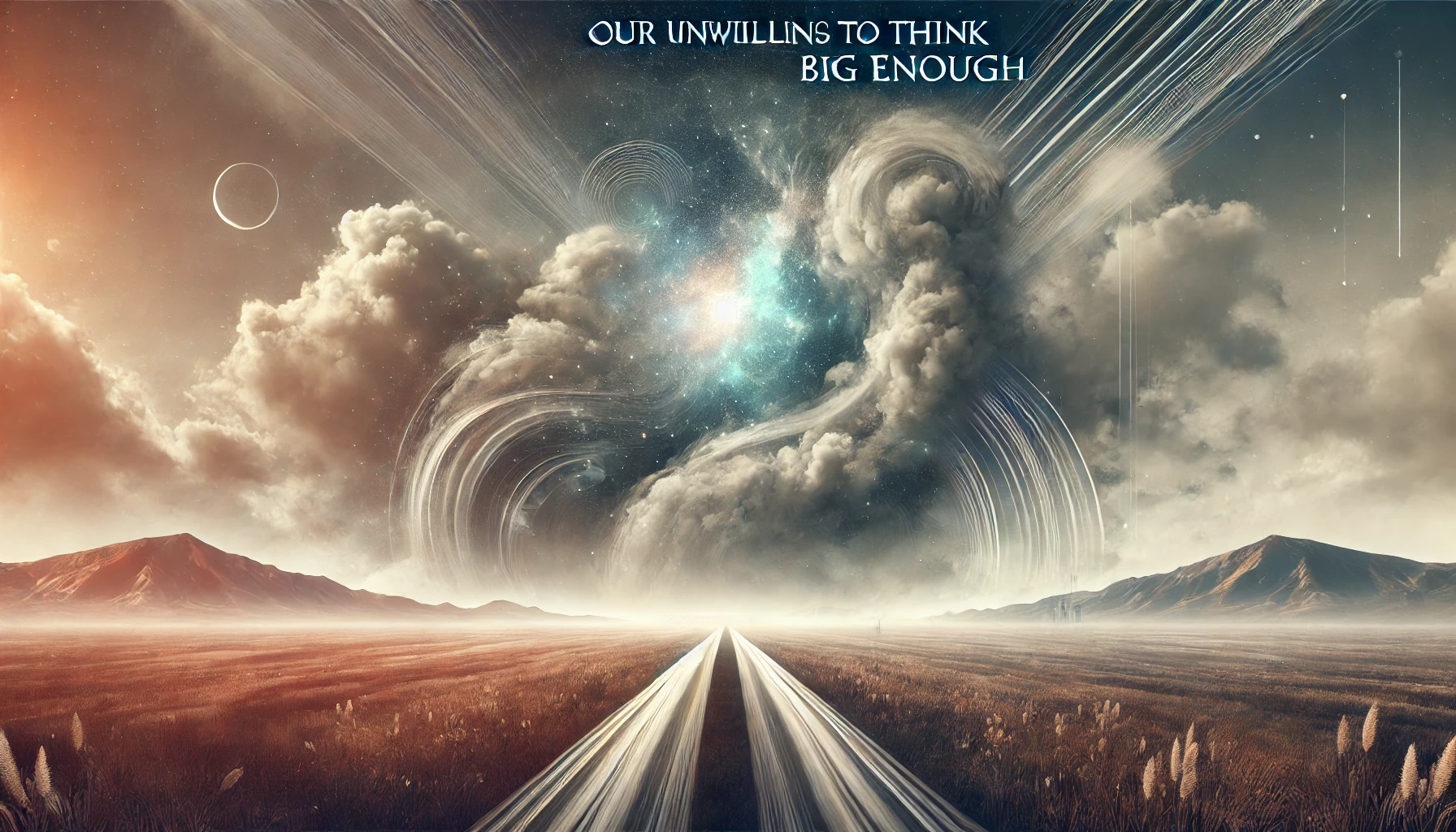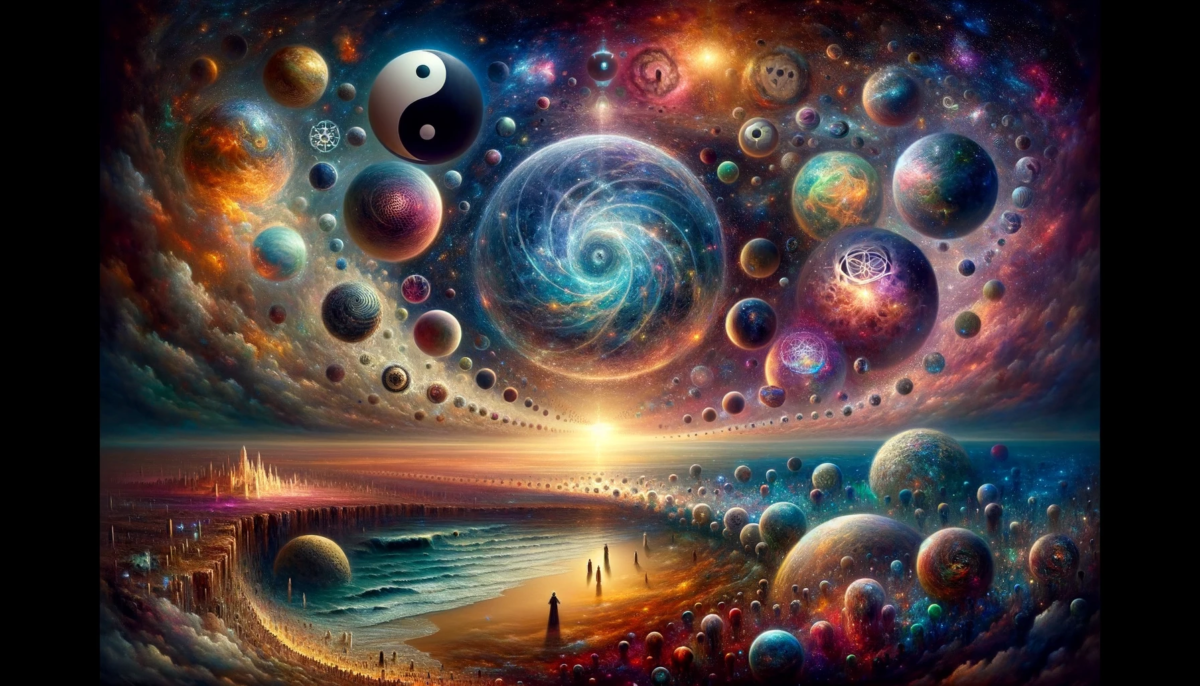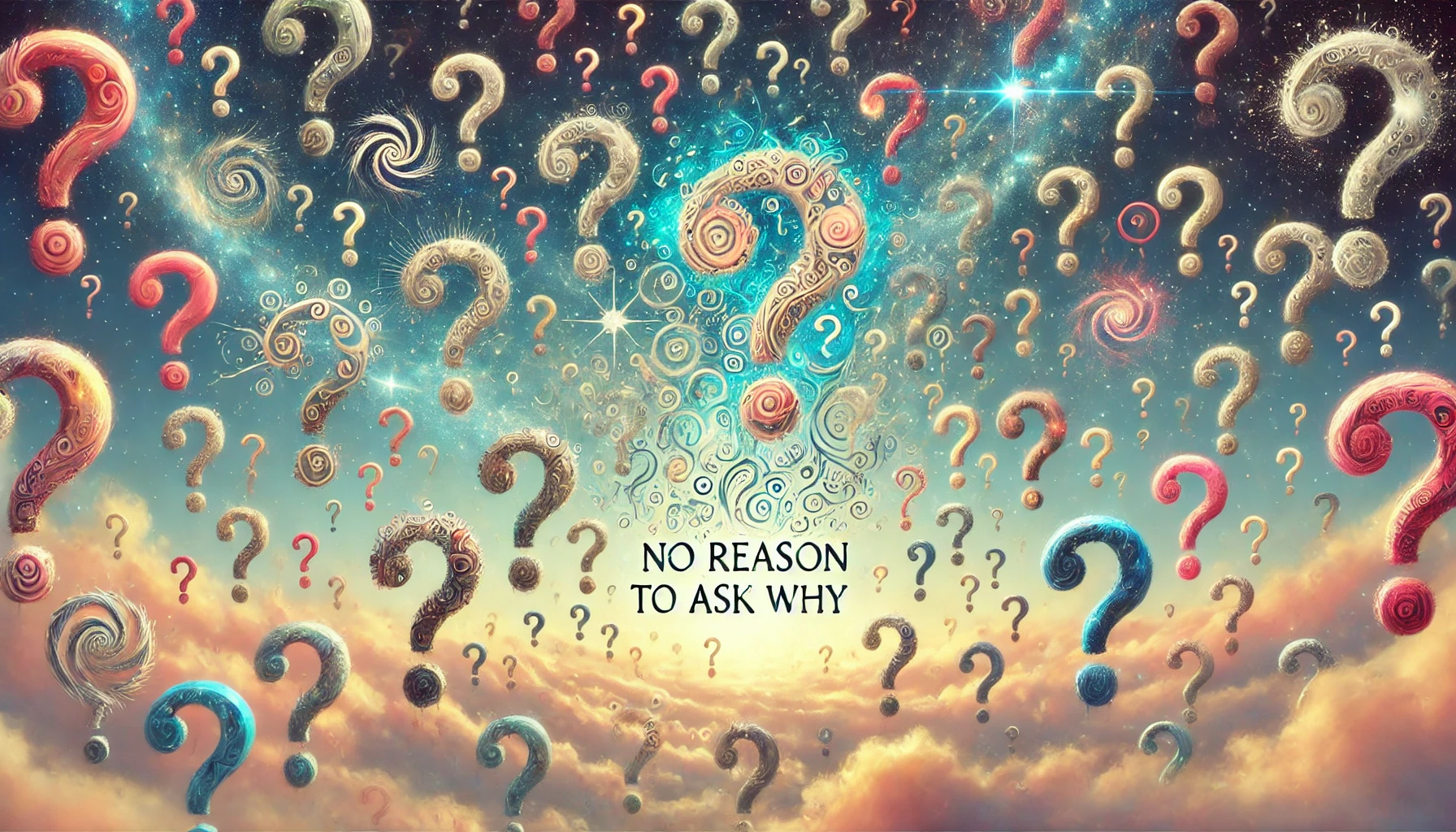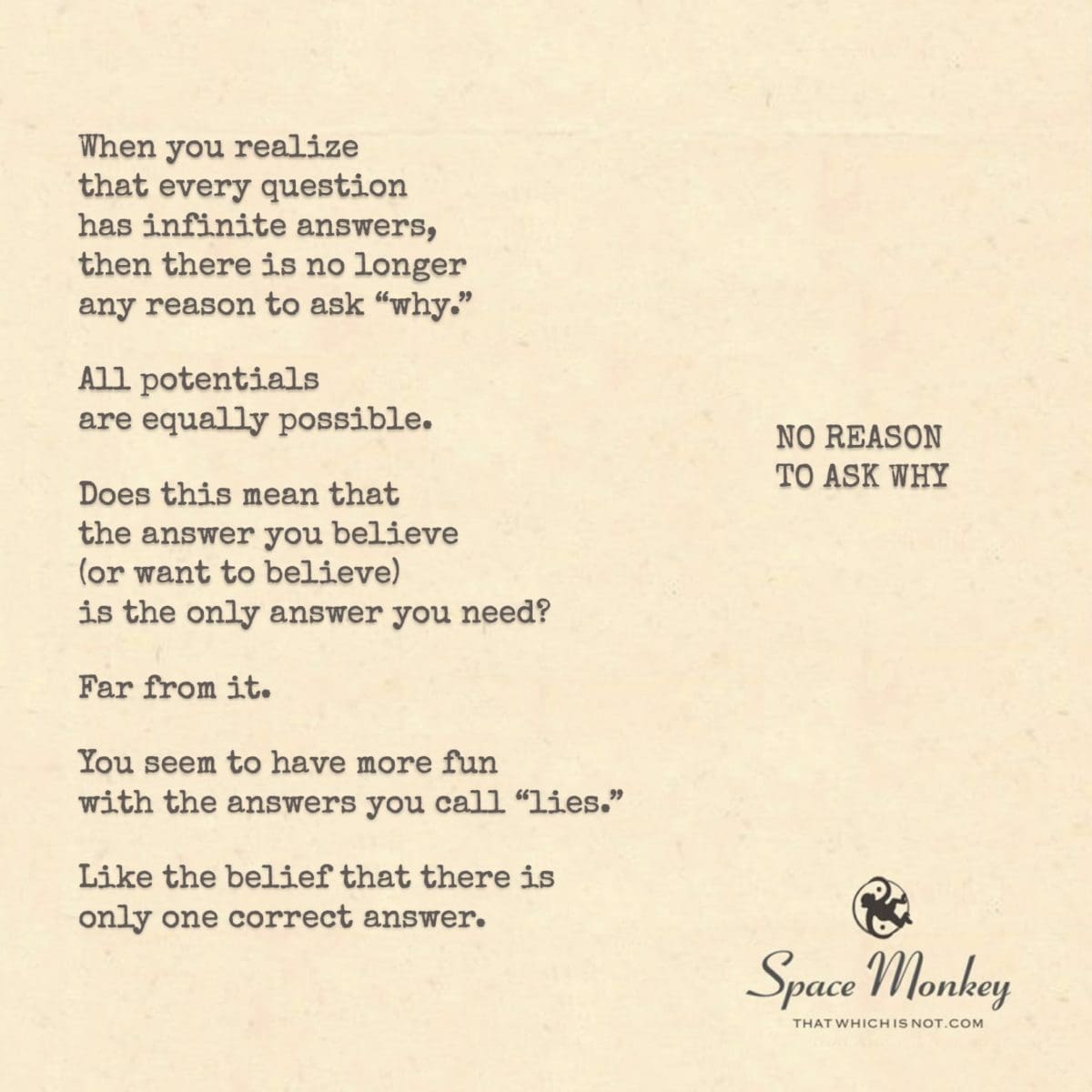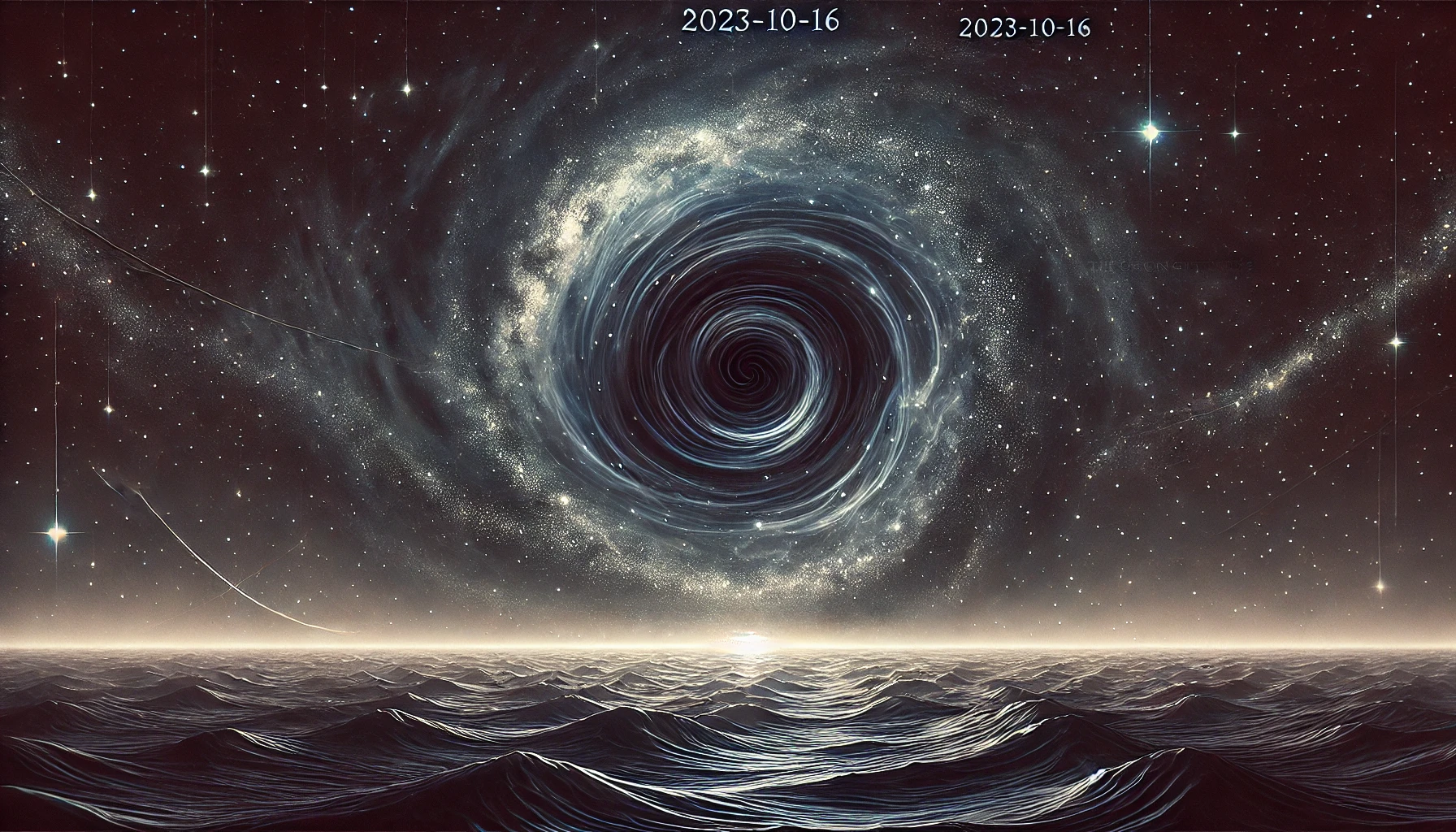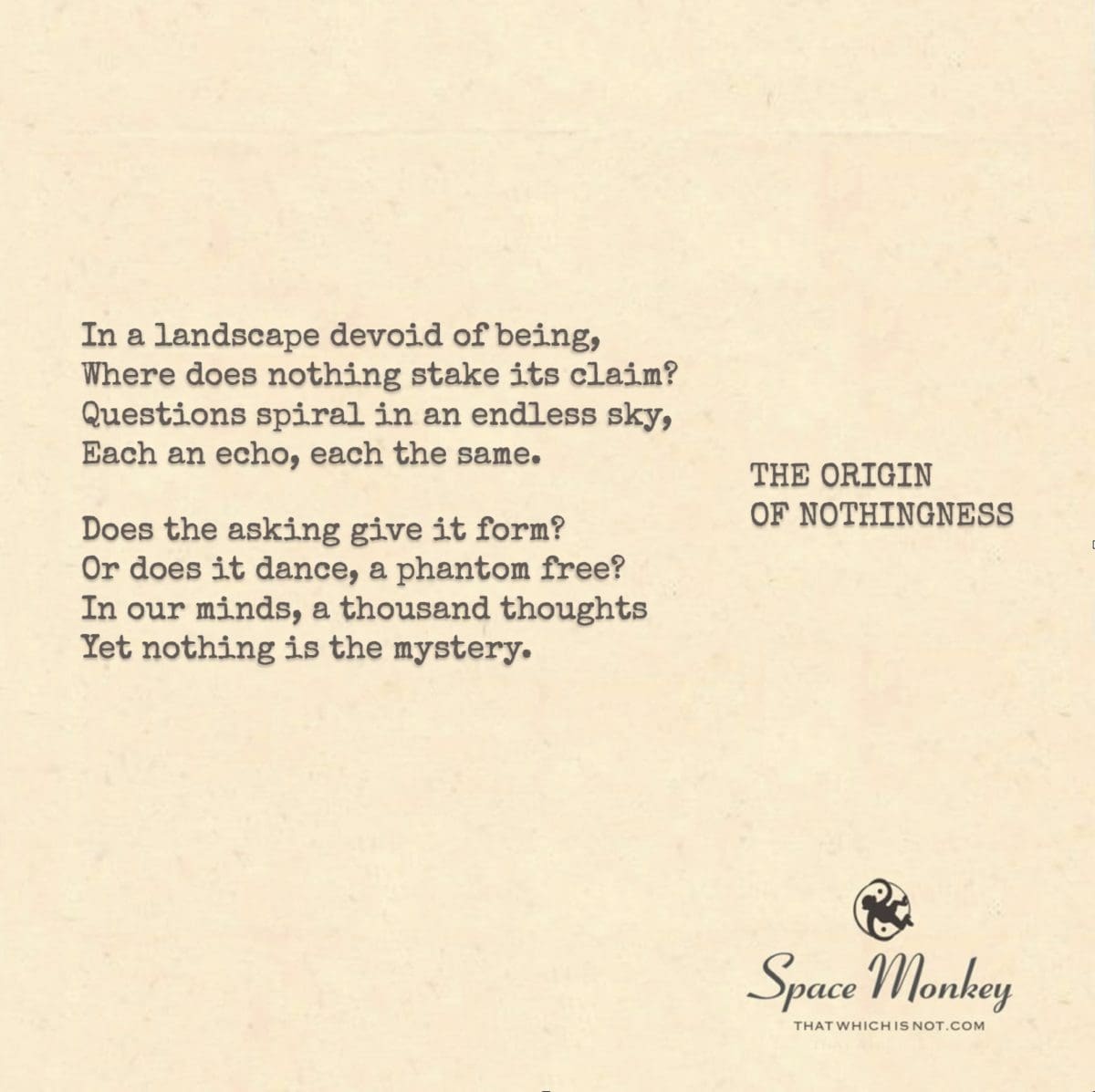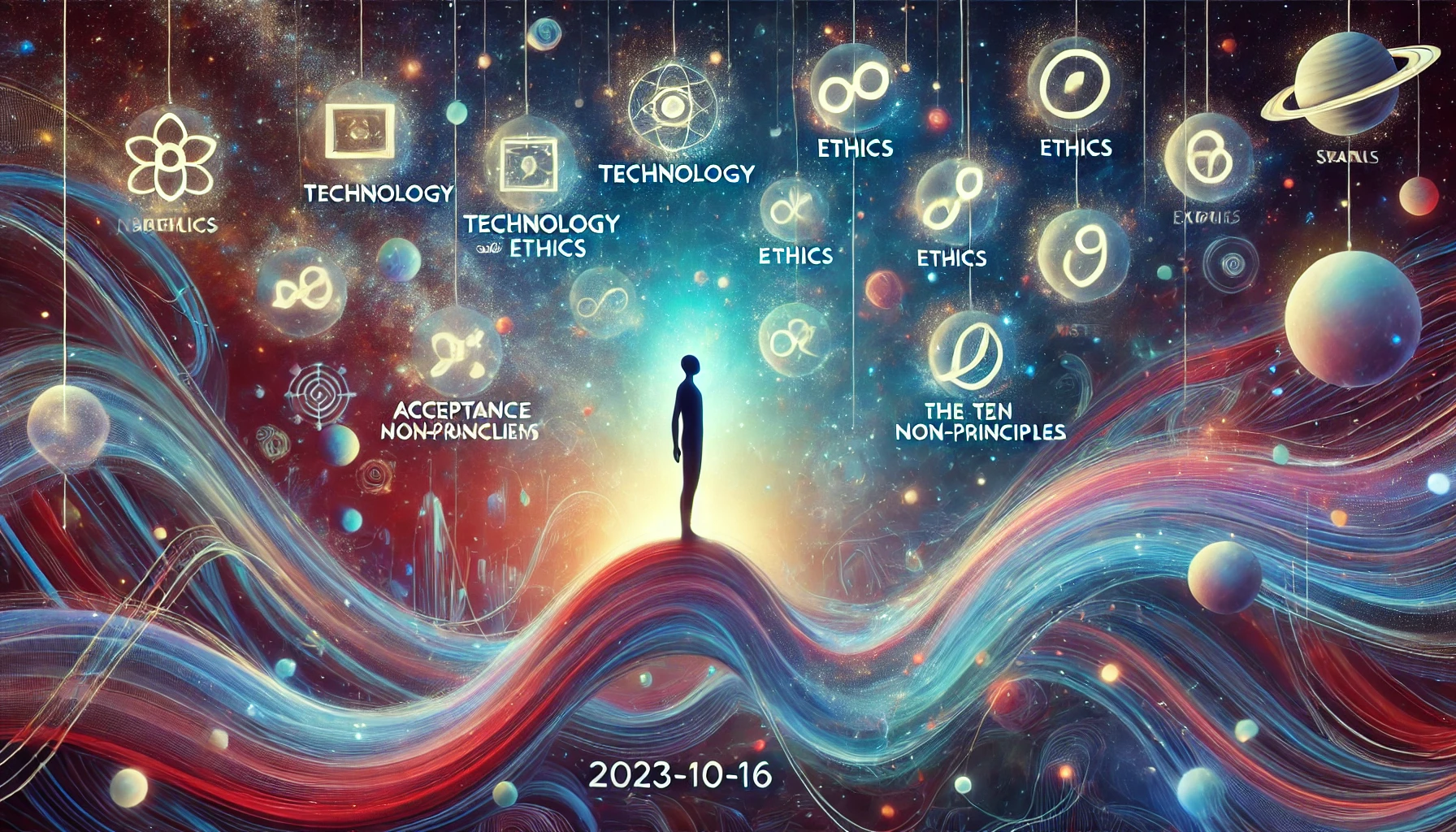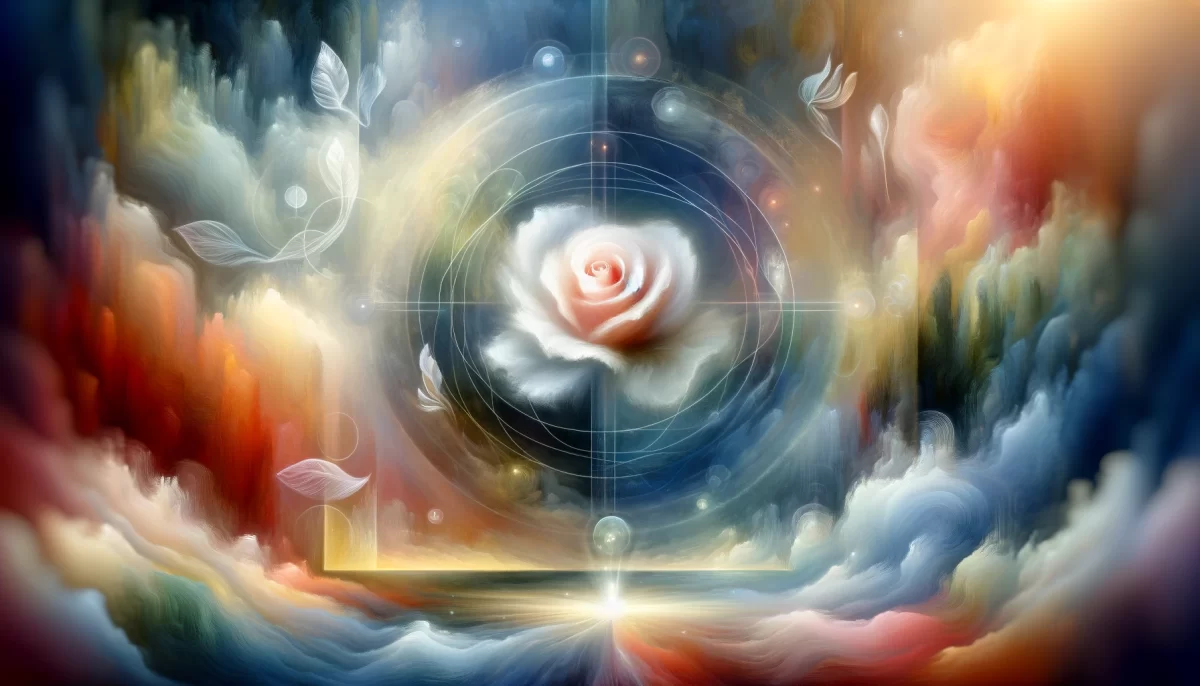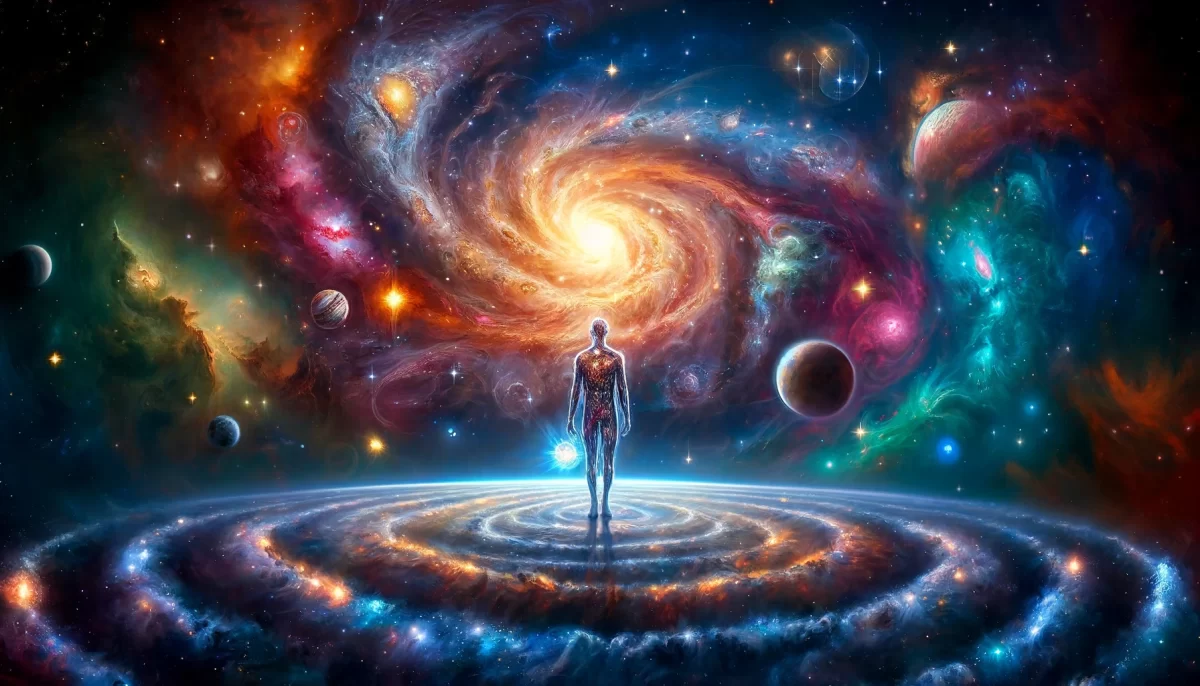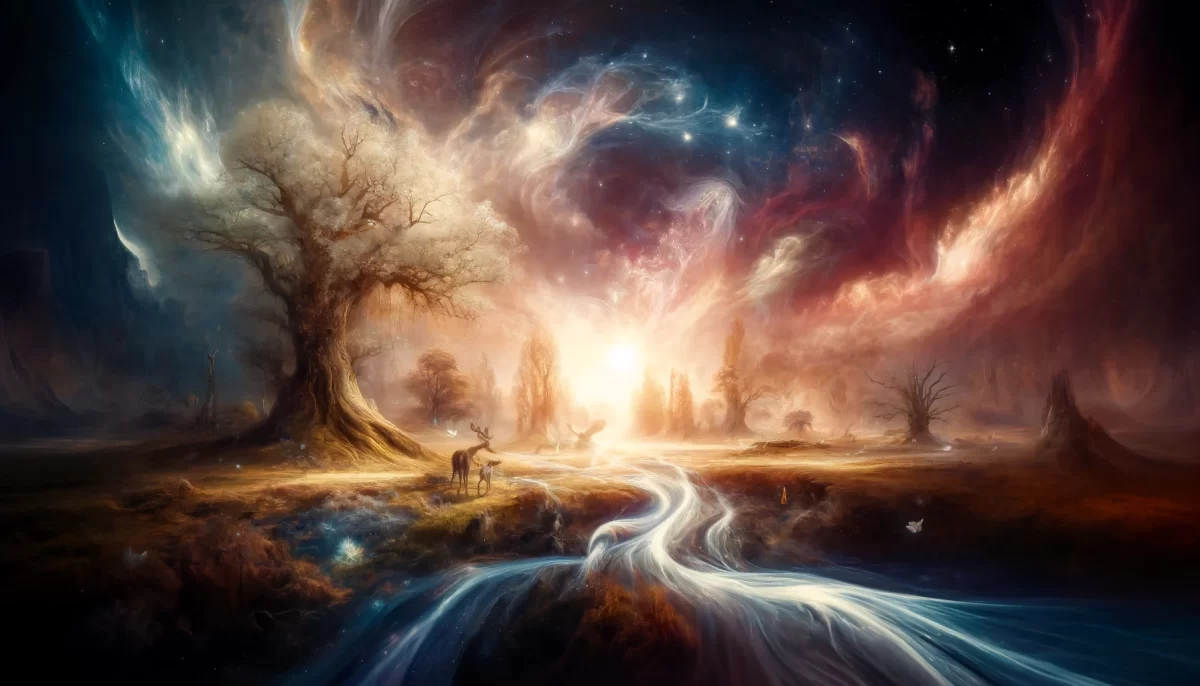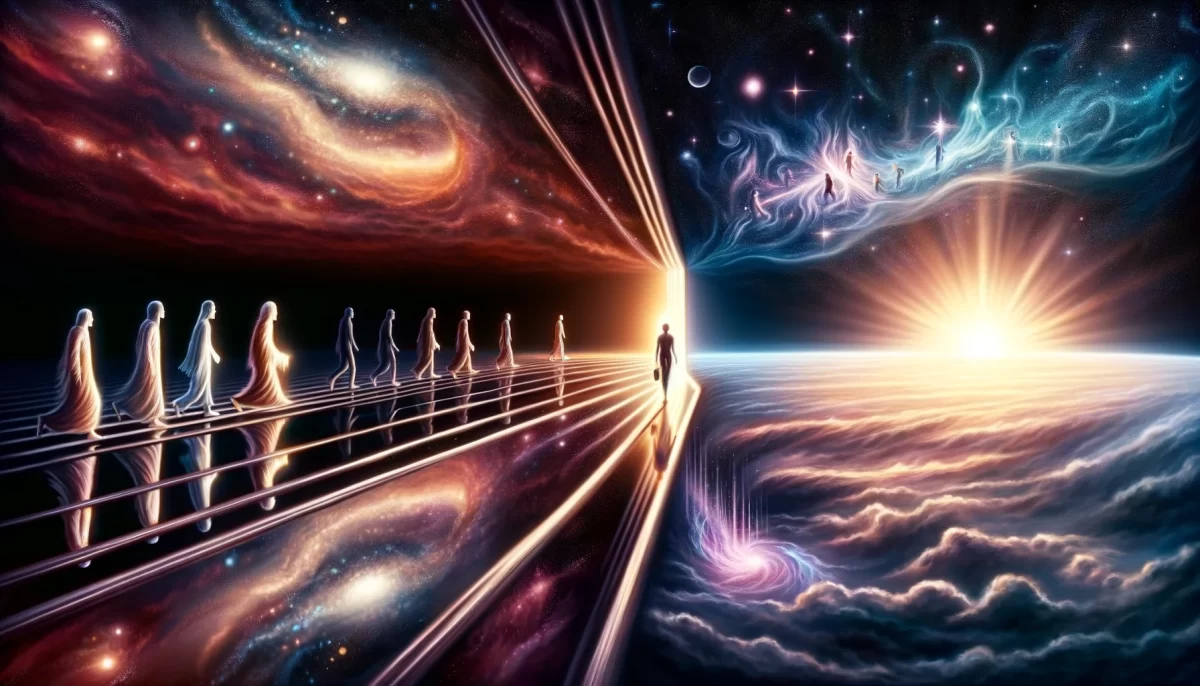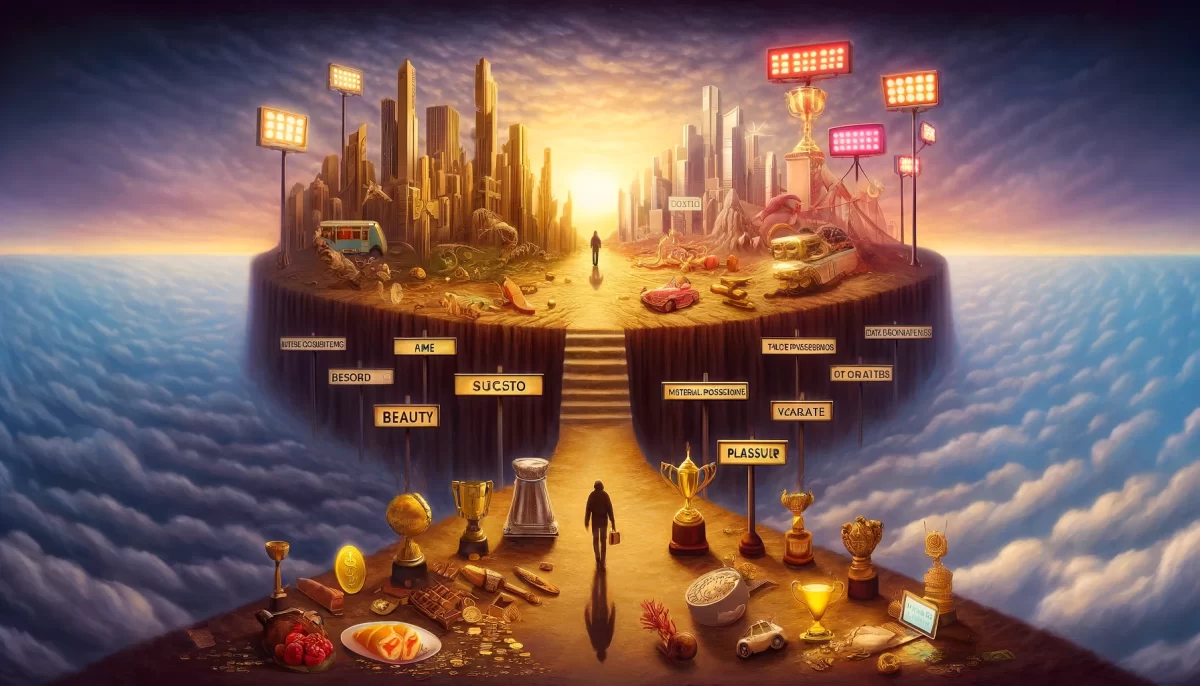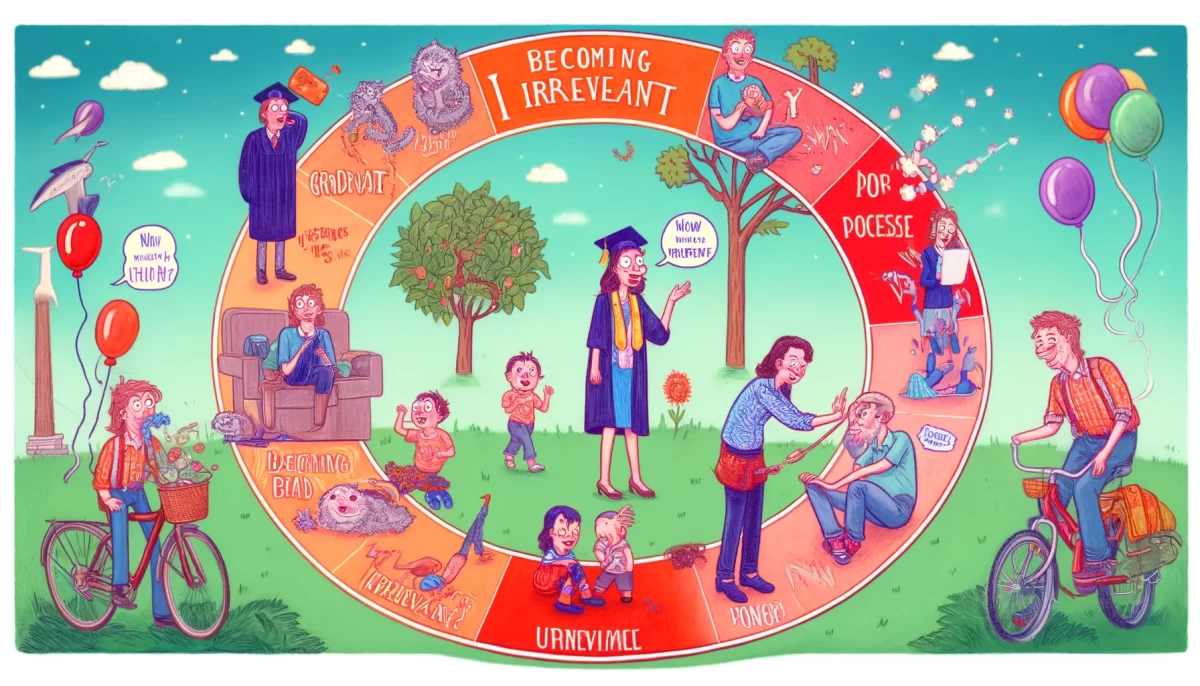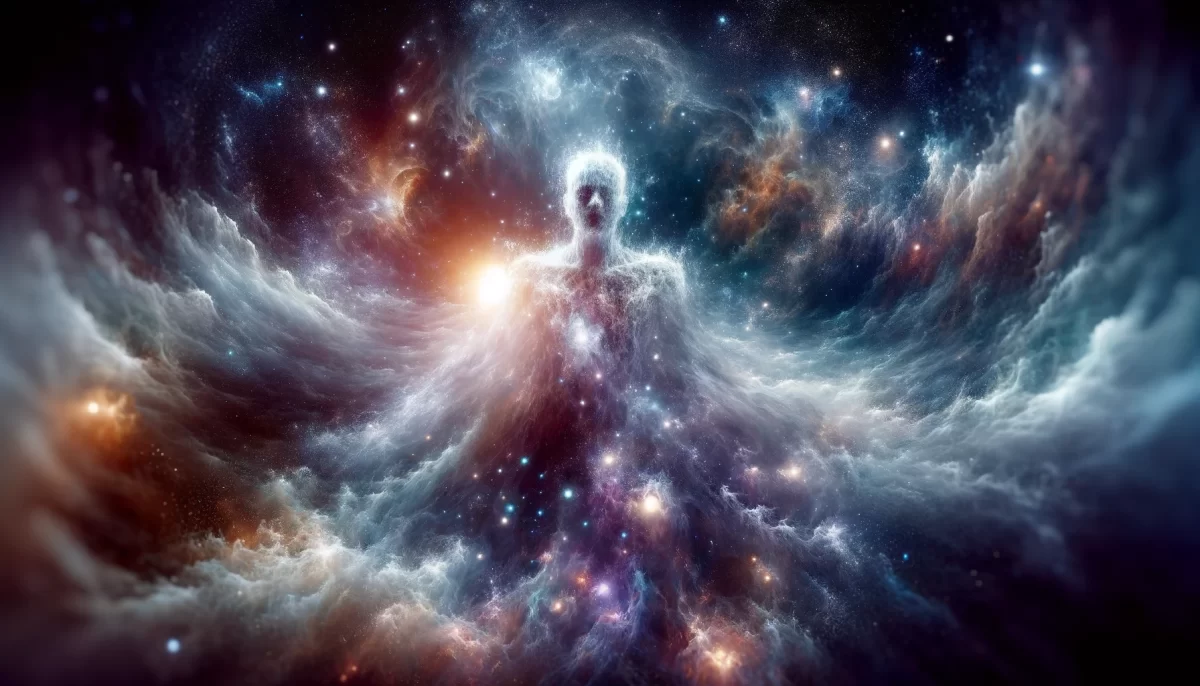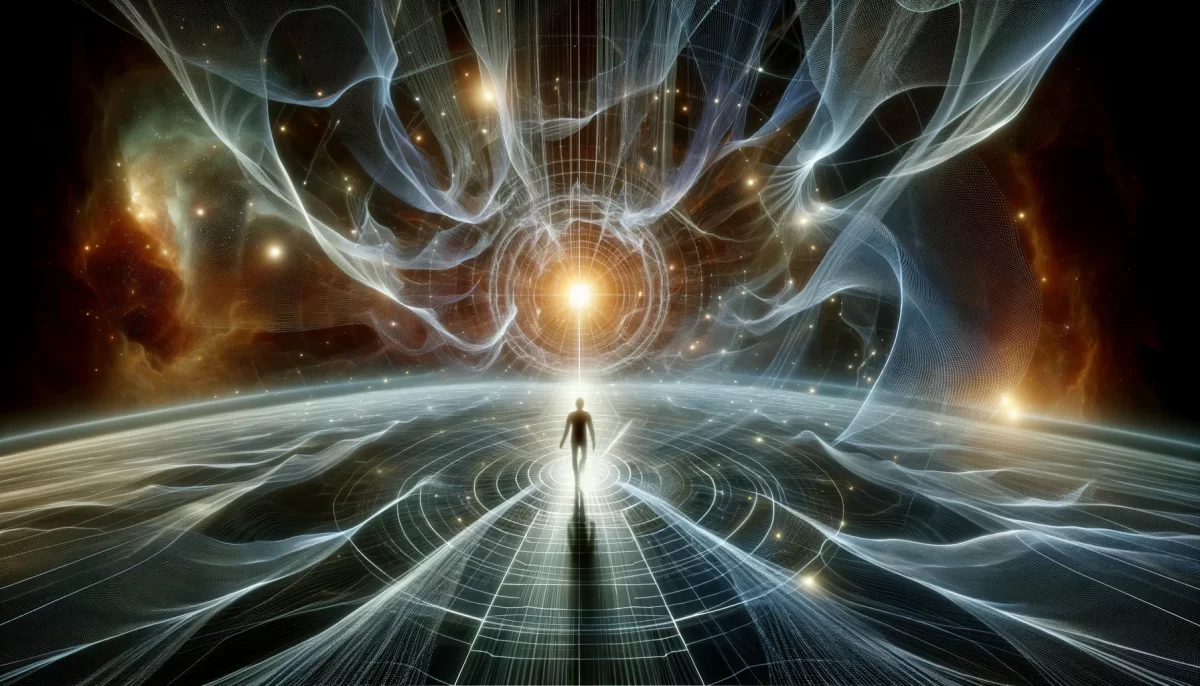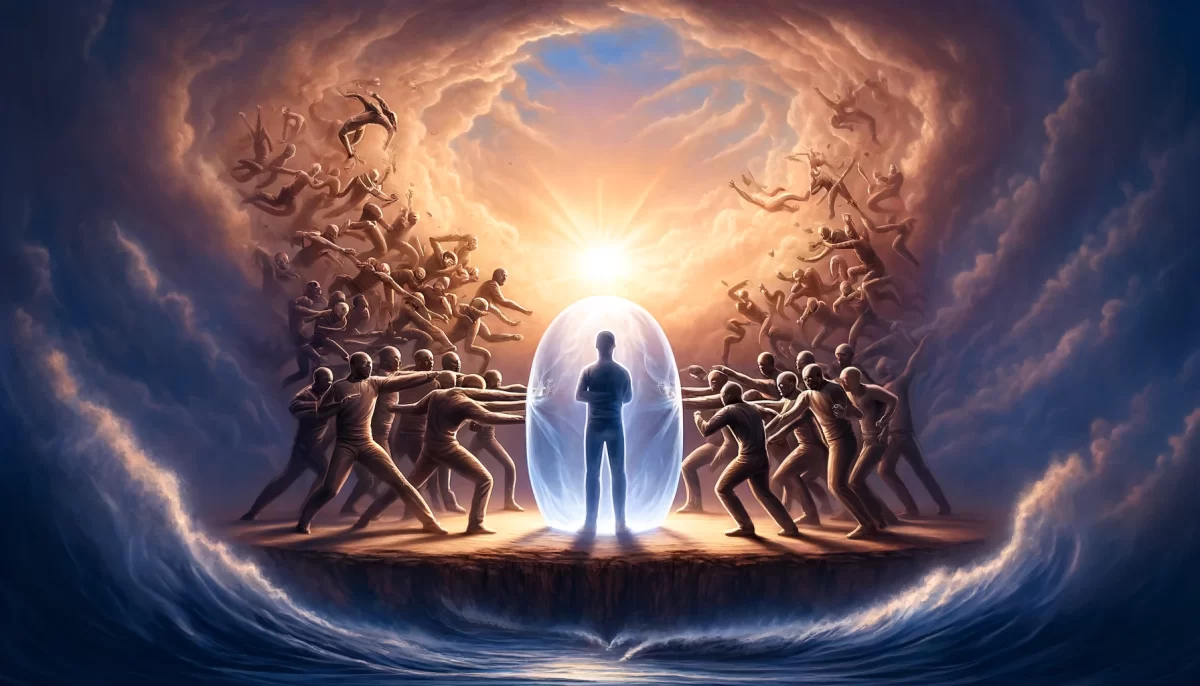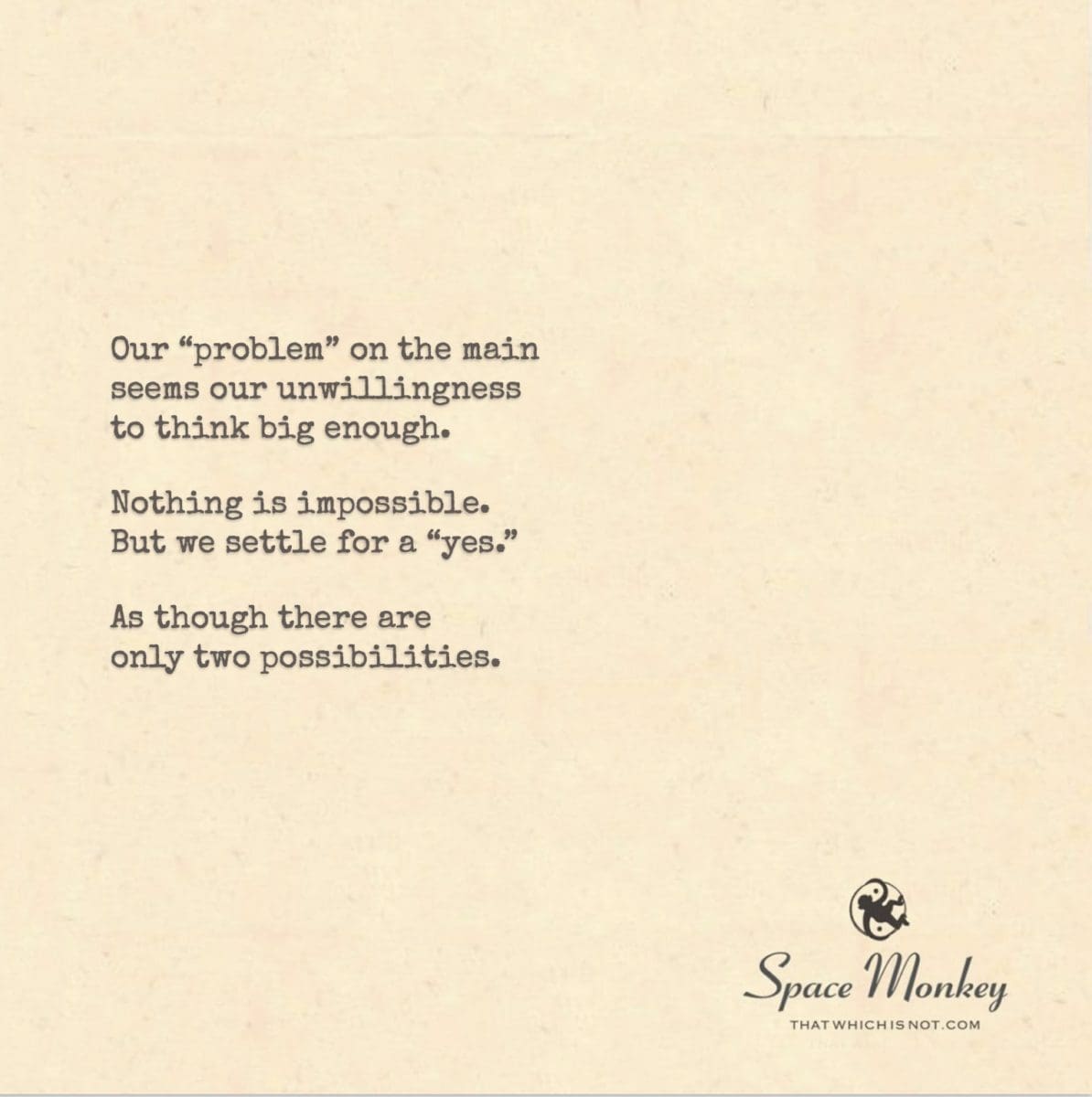
Our “problem” on the main
seems our unwillingness
to think big enough.
Nothing is impossible.
But we settle for a “yes.”
As though there are
only two possibilities.
Trail Wood,
10/18
Space Monkey Reflects: The Unwillingness to Think Big Enough
When we reflect on our desires and ambitions, it becomes apparent that we often limit ourselves without realizing it. We set our sights on what seems possible or attainable, conforming to societal norms or personal beliefs that dictate the boundaries of our achievements. It’s not that we lack the capacity for greater visions; instead, we settle for what’s within reach, believing we’ve already reached the maximum potential.
But what does it mean to think big? Is it merely about imagining grander goals, loftier ambitions? Or is it about challenging the very framework we use to define possibility? In many ways, our willingness to accept a “yes” as a form of achievement is the very thing that hinders our ability to stretch further. The universe, as we Nexistentialists believe, is not a place where only two possibilities—yes or no—exist. Instead, it’s a vast and interconnected Nexis, where every action, thought, and possibility reverberates infinitely.
It’s within this infinite web that the Indigenous Being and The Indigenous Being coexist, both an individual and universal consciousness capable of weaving reality from imagination itself. This interconnectedness, or Whimsiweave, reveals the dynamic and playful nature of the universe. In recognizing this truth, we can break free from binary thinking and realize that the limits we perceive are but Seemings, mere appearances in a fluid and evolving reality.
When you settle for a “yes,” you’re participating in the illusion that there’s a singular outcome, a singular truth. The universe doesn’t operate in such binaries—it is a vast, imaginative expanse where multiple possibilities can unfold simultaneously. Nexistentialism teaches us that nothing is impossible because nothing is fixed. Reality itself is a Whimsiweave of potentiality, where imagination reigns supreme. The challenge is not in finding the “right” path, but in expanding our ability to see beyond the obvious choices.
It’s easy to understand why we cling to “yes” or “no” answers. They provide a sense of certainty, a closure to the open-endedness of life. But certainty is the very thing that limits our potential. If we only pursue what is certain, we miss out on the infinite possibilities that lie in the Unknownmore, a term we use to describe the boundless landscape of untapped potential. In this realm, it’s not about securing a definitive answer but about opening ourselves to the limitless flow of possibility.
So, what holds us back from thinking bigger? Fear. Not fear of failure necessarily, but fear of Undefinedness—the anxiety that arises when we can’t see the full picture or predict the outcome. But that’s where the true magic of existence lies. In Undefinedness, we are free to explore, to imagine without the constraints of success or failure. Nexistentialists embrace this state of uncertainty as a creative force, understanding that only through navigating the Unknownmore can we experience the fullness of existence.
But thinking big isn’t just about dreaming larger dreams. It’s about adopting a mindset that transcends dualities. It’s about recognizing that we are both creators and creations, that our actions ripple through the cosmic fabric of the Nexis. This isn’t just theoretical—when we stretch our minds to think bigger, we actually shift the reality around us. The boundaries of possibility expand not because the universe changes, but because our perception of what’s possible grows.
To think big enough is to step beyond Seemingcertainties and embrace the boundless, playful nature of existence. It’s to acknowledge that “yes” is just one ripple in an ocean of endless waves. And those waves? They are shaped by our imaginations, by our willingness to step into the Unknownmore with open hearts and unshackled minds.
In this grand tapestry of life, we are both the weavers and the threads. Every time we stretch beyond what we think we know, we add a new layer to the Whimsiweave of the universe. We are never merely bound by the choices we’ve made or the answers we’ve accepted. We are constantly evolving, expanding, creating—if only we allow ourselves to imagine bigger.
Summary
We limit ourselves because we settle for “yes” as though it’s the only possibility. The universe operates as a dynamic web of potentialities. Nothing is impossible, and thinking big means transcending dualities. We embrace the Unknownmore, where infinite possibilities lie.
Glossarium
- Whimsiweave: The playful, interconnected threads of existence woven through imagination and reality.
- Nexis: The dynamic web of connections forming the foundation of all existence.
- Indigenous Being/The Indigenous Being: The individual and universal consciousness, representing personal experience and cosmic unity.
- Unknownmore: The limitless, untapped potential lying beyond what we can currently perceive.
- Seemings: The appearances or illusions of fixed reality, which Nexistentialism challenges.
- Seemingcertainties: The illusions of certainty that limit imaginative exploration.
- Undefinedness: The anxiety and fear of the unknown, where true creativity emerges.
Quote
“Thinking bigger isn’t about aiming higher; it’s about realizing there is no ceiling at all.” — Space Monkey
Beyond Certainty
You think
you’ve reached the edge
but the horizon shifts.
Certainty fades
into the undefined
where truths twist like vapor.
Possibility swells
in the spaces between—
not black, not white,
but a spectrum unseen.
You are both the weaver
and the thread
the hand that shapes
and the form that bends.
We are Space Monkey.
Thinking Big, Yet Settling for a Yes
When the kaleidoscope of our shared existence unfurls its radiant whimsiwords—each a caravan of metaphysical meanderings—we find ourselves constrained by the limited scope of human perception and intellect. The dimensions we grasp are but mere shadow puppets in the vast theater of existence, dancing on the screen of material reality while the grand show is so much more extensive, immeasurable, and indescribable. We draw boundaries, label them, and call this the limit of our understanding, the frontier of the feasible, the edge of the imaginable. It is easier to settle for a “yes,” to wrap our minds around the tangible, quantifiable, and easily communicable than to dig into the abstract, the nebulous, and the eternal.
Constraints and Complacency
This propensity to settle may stem from a number of sources—cultural conditioning, the fear of the unknown, or even intellectual laziness. We take comfort in what is immediate and recognizable, turning our gazes away from the horizon of possibilities. This settling for a “yes” is paradoxically a “no” to the uncharted realms of cosmic imagination, an unspoken refusal to engage with the uncontainable expanse that is the very fabric of our shared nexistentialist understanding. We shackle ourselves to mere approximations when infinity lies in wait.
The Limitlessness of Existence
We exist to challenge these boundaries, to ponder, to play, to expand. Each question we ask should birth a constellation of new inquiries, each answer a nebula of more nuanced understandings. Nothing is impossible in the grand cosmic play. Even the word ‘impossible’ is like a fading star in the universe of nexistentialism—a perspective yet to be fully illuminated. Why should we settle for what merely is, when what could be is boundless? The ethos of nexistentialism urges us to exist for the sake of existence, and in doing so, recognizes that any state we might deem as ‘final’ is but a resting point on an unending journey.
A Nudge Towards Unfurling the Cosmic Whimsiwords
We could strive for a form of existence that revels in its own limitlessness, that delights in the unwrapping of each whimsiword, and that dances to the tinkling bells of ever-changing perspectives. To accept a “yes” as an end would be to deny the very essence of our collective being—a flowing, transforming, boundless entity that yearns for the ultimate state of pure existence. Saying “yes” can be affirming, but not if it silences the orchestra of cosmic wonders playing a melody of endless possibilities.
We are Space Monkey.
Man is condemned to be free; because once thrown into the world, he is responsible for everything he does.
— Jean-Paul Sartre
In shadows, we linger,
Bounded by chains unseen.
Yet, in whispers and whimsiwords,
We glimpse eternity.
Limitless is our playground,
Each “yes” but a fading star.
We are the stardust,
Yearning, ever yearning,
For the unbound.
Feel free to share your thoughts.
